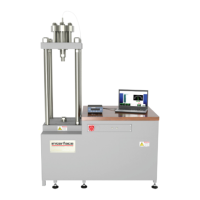7418 East Helm Drive • Scosdale, Arizona 85260 • 480.948.5555 • www.interfaceforce.com
Page 7 of 45
The following operang safety procedures are applicable to most tesng systems. The user is required to read
each item below and determine if it is applicable to the tesng system for which this hydraulic power supply
will be used. The user is also required to obtain and review all safety instrucons on specic tesng equipment
used in the system.
Determine the locaon of system emergency stop buons to allow for quick emergency stops.
Interlock devices, such as the Emergency Stops, should always be used and properly adjusted.
Test all interlock devices immediately before each test. Because of the possibility of operator
error, system maladjustment, or component failure, interlock devices cannot be relied on to
protect personnel, unit under test, or test equipment. Thus, standard precauons about staying
clear of the ram should always be followed.
When system power is on, stay clear of each end of the actuator piston rod. The area on the
base plate used for component installaon should be worked around with cauon. Never place
any part of your body between the actuator piston rod and base plate when the hydraulic pres-
sure is on. Due to unit under test failure, operator error, or other factors, the actuator could
unexpectedly react and cause personal injury.
High forces and rapid moons are usually present in tesng systems. Unexpected actuator
responses can be very dangerous. Likely causes of dangerous actuator reacons are operator
error and equipment failure due to damaged or abused equipment. An actuator piston rod that
reacts suddenly can strike an operator installing a unit under test or damage the load cell or
expensive components. For the above reasons, anyone who operates, maintains, or modies
a system should read all provided manuals to acquire a thorough knowledge of the system’s
operang characteriscs.
Never allow bystanders to touch unit under test or equipment while the system is operang.

